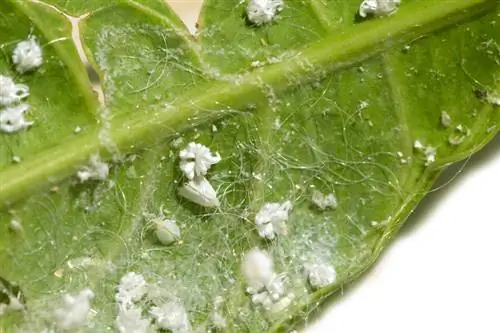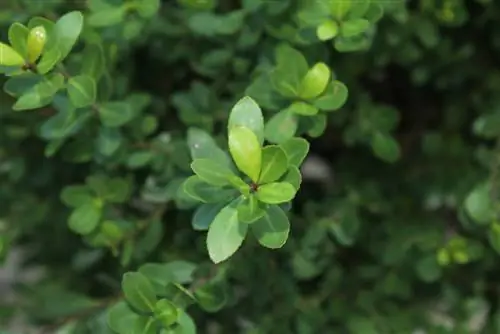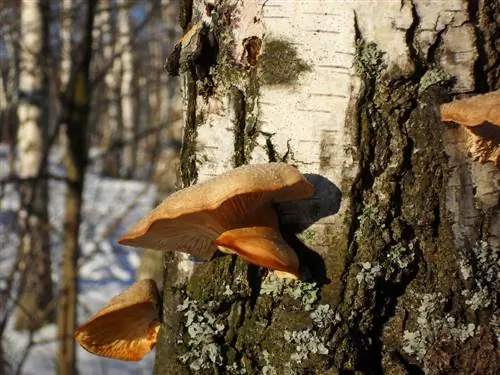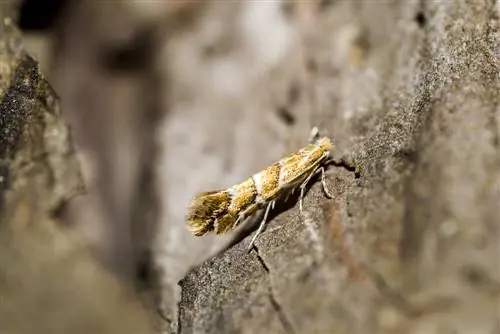- Author admin [email protected].
- Public 2023-12-16 16:46.
- Last modified 2025-01-23 11:20.
Normally, magnolias are rarely attacked by pests or other diseases. Nevertheless, two pests in particular - scale insects and whiteflies - are quite common on magnolias and can permanently weaken the tree.

What pests attack magnolias and how do you fight them?
Magnolias can be attacked by scale insects and whitefly, both of which suck plant juices and lead to honeydew secretions. Prevention and control include good care, mulching, nasturtium planting and application of garlic, nettle or onion decoction. Insecticides can also be used to treat whiteflies.
Scale insects
Scale insects are plant lice and are quite small insects between 0, 8 and 6 millimeters long, depending on the species. Mealybugs and mealybugs in particular attach themselves to young shoots as well as to the underside of leaves and leaf axils and suck out the nutrient-containing leaf juice. The high sugar content of the food leads to very sweet excretions, the so-called honeydew. This in turn magically attracts aphids and ants - so as soon as you notice large accumulations of ants on your magnolia, you should become suspicious. A greasy, black coating indicates that the honeydew is colonized with sooty mold, a fungal disease. Mealybugs spread very quickly and are difficult to control.
Prevent and combat scale insects
Scale insects primarily attack plants that are weakened or over-fertilized with nitrogen. Overwintering the magnolia incorrectly - for example in a warm living room - also promotes infestation. If the magnolia is already infected, spraying the affected shoots and leaves several times with garlic, nettle or onion decoction can help. Loosen the soil in the tree disc without hoeing or digging deeply. Mulch your magnolia or plant nasturtiums underneath.
Whitefly
In particular, the tiny ash whitefly (Siphoninus phillyreae) often attacks weakened and/or over-fertilized magnolias. The insect, which is only around 1.5 millimeters in size, lays its numerous eggs on the underside of the leaf. The larvae that hatch and the adults also feed on the plant juices that they suck from the leaves of the magnolia. They also excrete honeydew, which in turn promotes the formation of mold and sooty fungi. As a result, the magnolia sheds more leaves.
Fighting whitefly
The whitefly has numerous natural enemies, including ladybirds and parasitic wasps. However, these are difficult to use specifically on magnolias planted freely in the garden, so a special insecticide can help.
Tips & Tricks
If your magnolia seems to shed its leaves for no reason, root damage by certain larvae, grubs, caterpillars or even voles could also be the cause. The black weevil larvae in particular like to gnaw on the roots and leaves of the magnolia; like their host plant, they prefer loose and humus-rich soil.






